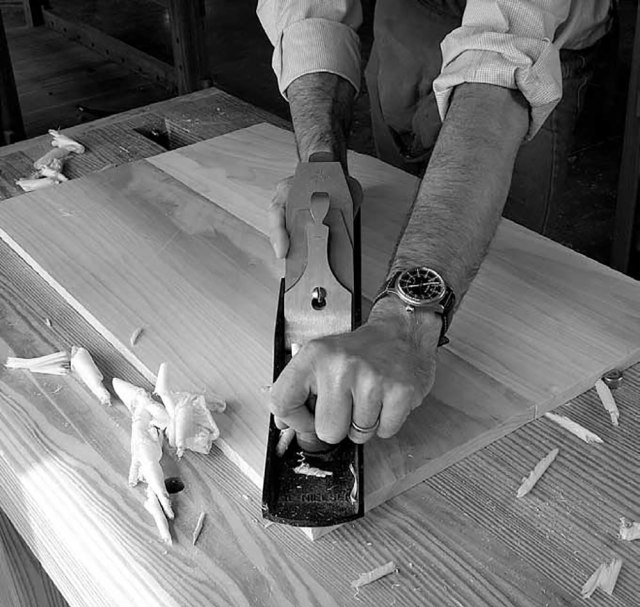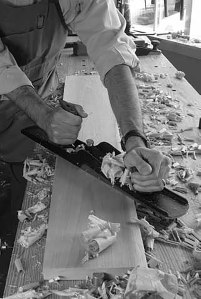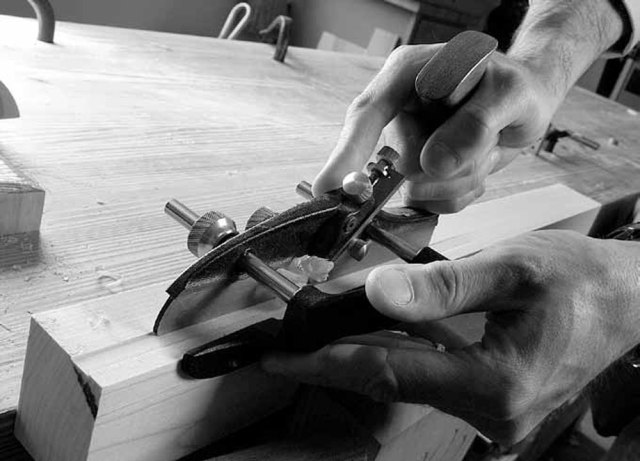
This is an excerpt from “The Art of Joinery” by Joseph Moxon; commentary by Christopher Schwarz
Analysis
Moxon’s plow is widely reported as a mirror image of the same tool in Félibien’s work. And that is why this picture of this plow is like a Gucci bag for sale on an urban street corner. It looks OK from about 10 feet. But on closer inspection, this is not the plow you’re looking for.
Unlike many tools in Moxon, the plow has evolved quite a bit since his description. And you’d be unlikely to find a plow as he describes. Let’s look at the differences between the Moxon plow and some ultra-contemporary (19th-century) ones.
1. The posts or staves. Moxon states that the staves move through the body of the tool to adjust the fence. The fence is fixed to the staves. This kind of wooden plow was common in England and North America but not Europe. In typical European plows (which is what is shown in the accompanying plate) the staves are fixed to the body and the fence slides on them.
2. From many plows, one. Moxon states that the mechanic would have a different plow for every size groove. Modern plows have interchangeable irons in a range of sizes.
3. How the fence is set. In Moxon’s book, the staves and fence are friction-fit into mortises. So you tap the fence and staves to move the fence closer to or farther away from the cutter (with wedges to help).
Modern plows use something mechanical to secure the fence, from thumbscrews to screws to far, far more clever mechanisms.
4. No depth stop. All but the most primitive plow planes have a depth stop that stops the plane’s cutting action when you reach your final depth. No mention of a depth stop is made in Moxon.

As to actually using the plow, Moxon merely states that you set the fence and thrust it forward like the other planes. This would imply that you start planing at one end and take a shaving to the other end. This can work. However, many craftsmen use a different technique.
Many start near the far end of the board and take a short stroke with the plow to start cutting a groove just a few inches long. Then each following stroke is a little bit longer as the woodworker backs up along the length of the board.
You can indeed do exactly what Moxon suggests, but the chances of your iron wandering by following the grain of the board are greater.

By taking short, advancing strokes, you can keep the plow’s fence against the work during the part of the cut that is new, then the cutter drops into the already-made groove and the tool won’t jump out.
Plus, if your plow plane does wander, it will be for a shorter distance, and you’ll get an opportunity to make a correction before the tool wanders so far that your work is ruined. Here’s another tip on use: Give each of your hands only one job to do when working with the plow. Use one hand to thrust the plane forward. Use the other hand to press the fence against the work. Don’t try to make both hands do both jobs.
— MB